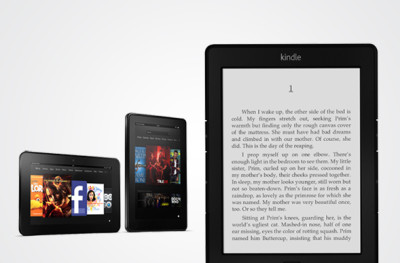As the year draws to a close, we begin to see announcements from the world’s tech giants introducing their latest products, just in time to catch the festive spending season. Apple launched the iPad Mini, Samsung rolled out their latest Galaxy tablet, Google launched the Nexus 7 and Microsoft did not pull any punches with a major launch event in Times Square for its Surface tablets. Excluding these, there are at least 21 other devices from different manufacturers that have been released or are due to be released by the end of this quarter.
In a market as competitive as the mobile computing market, it seems that every major computer manufacturer is jumping onto the bandwagon with their own version of what they envision to be the future of the industry.
Some even try to launch more than one in a year. Apple launched a total of three, including the now obsolete 3rd Generation iPad – which was in official availability for 221 days – the iPad Mini and the 4th Generation iPad, essentially cannibalising their own products.
Although you see offerings that are unique in terms of design and use, they essentially fulfill the same needs. In fact, this only highlights what they lack, when the consumer has to compare them alongside the market leader.
How then can a company compete in such an environment if not by cramming their products with the latest technology, spending millions on advertising, or playing the price game?
Amazon stands toe-to-toe with the tech giants in the mobile computing market because they knew not to focus merely on releasing the latest gadgets in present-day product development. They single-handedly revived the e-book market when the Kindle launched in 2007. Since then, more than a million Kindles per week have been sold.
How can a company that started as an online bookstore be so influential in the mobile computing market? Comparatively, the average tablet offers so much more than the latest Kindle does. The initial product offering did not even have a colour screen to begin with.
The answer lies not in making a better product, but in winning the customer over. It is what is behind the scenes that makes a difference.
Amazon understood what they could bring to their customers, which was a better way to get to what they love – a good read. The Kindle allowed their customers to access their favourite reads in a quicker and cheaper way by availing their catalogue of books from every major publisher online, as opposed to getting a book from a brick-and-mortar bookstore.
Businesses can draw crucial lessons in their product development from this, especially when it is so easy for companies to be faster, bigger, more powerful or more feature-filled than their competitor, rather than being more influential.
1. Improving the way you meet customer needs is also innovation.
E-ink, the Amazon Kindle electronic display, could not work in colour and Amazon could have used a conventional colour screen. They chose not to because the E-Ink display gave people a better reading experience.
Do not be too fixated on innovating arbitrarily or trying to make your product the latest and greatest. Instead, focus on how you can give your customer a better experience.
Heard of the Sony LIBRIe? It was an e-reader developed by Sony before the Kindle, that did not reach the heights of success Kindle and Amazon enjoyed simply due to the lack of content. The Kindle had over 88,000 titles ready at launch, far more than the 1,000 titles per publisher that Sony had access to. The real success factor was the supporting content and not how powerful the hardware was.
2. Improving customer relationships will lead to product improvement.
A key part of Amazon’s success lies in the relationships cultivated with their customers and how they think about improving it. “The vision is to build an incredible customer experience,” Steve Kessel, Senior Vice President of Worldwide Digital Media at Amazon says. “To do what Kindle has done for reading – that simplicity, that ease of use – to bring that to movies, TV shows, apps.” Essentially, they are more concerned about bringing content to their 65 million customers the way they did for books, so that they can give their customers more.
Amazon improved upon not only the hardware but also the software and the supporting content that goes into their product. Many technology companies assume showcasing more features such as a bigger screen or faster processes indicates that they are better at meeting their customer’s needs. However, it is ultimately how these features benefit the customer that will give your product the edge.
3. Focus on getting the fundamentals right.
One of the success factors of the Kindle is that fundamental functions and design principles are kept intact. Nothing was left to chance. Users could easily access content and enjoy the product without worrying about its battery life. Some features from the old Kindles such as audio capability were taken out in the latest Kindle Paperwhite as they streamline and create a more focused e-reader.
In an ideal situation, you would have enough time, resources, talent and support to get it right. The reality is that you often face limitations. Businesses that recognise this and cut their ambition for the sake of getting the basics right can reap unexpected rewards. On focusing on the core of what you are doing, one of my favourite business leaders, Jason Fried aptly asks: ”If I took this away, would what I’m selling still exist?”
4. Have a genuine passion for the product.
At the heart of it all, truly successful products stem from the passion of the people developing them. Amazon knew about books and e-commerce, although they took a step out of their comfort zone in developing the Kindle, they knew what the purpose of it was and how it relates to their passion and purpose.
Gibson guitars is another example of companies creating products from genuine passion. In the 80’s, they allowed a compromise in their product in order to compete with an influx of cheaper foreign made guitar brands. They carried ‘seconds’, essentially guitars that have slight defects, to be sold at a lower price.
When the current CEO Henry Juskiewicz took over, he took a hard line with these ‘seconds’ and made it a point for Gibson to only sell the highest quality guitars. At the end of every work week, he would take his employees to destroy these faulty guitars using a chainsaw, just to show them what the Gibson brand should stand for. Being a passionate guitarist, he understood the market from a customer’s standpoint and adjusted his business to give the customer a better experience. By instilling a culture of quality excellence, he was able to also translate this passion to the product development.
Roy Chen is a Senior Strategy Consultant at Consulus, who has worked on projects covering a wide range of Asian and European markets. He specialises in creating fresh brand experiences for products.
This article is part of The Columnist, a newsletter by Consulus that offers ideas on business, design and world affairs. For past issues, browse the complete archive.




